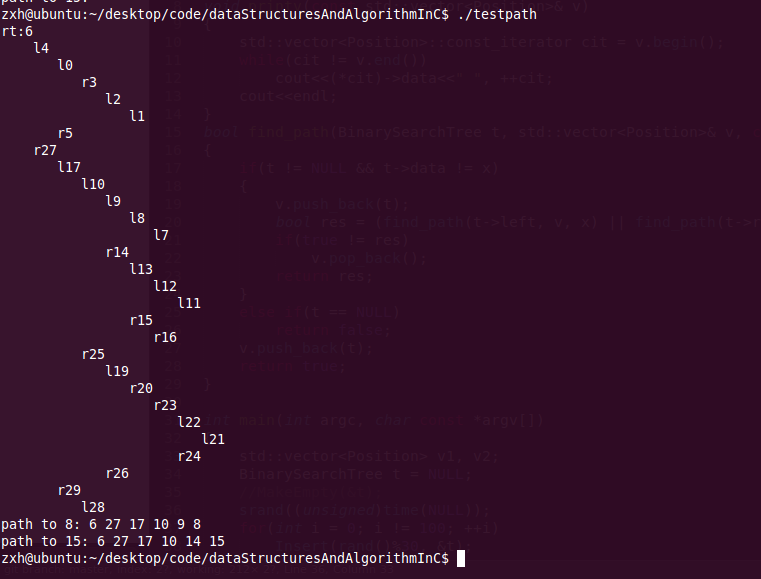
1 //通过寻找从根至节点的路径,取两个节点路径上的最后一个相同的节点,即为最低公共祖先 2 #include <time.h> 3 #include <stdlib.h> 4 #include <vector> 5 #include "BinarySearchTree.h" 6 #include <iostream> 7 using namespace std; 8 9 void printv(const vector<Position>& v) 10 { 11 vector<Position>::const_iterator cit = v.begin(); 12 while(cit != v.end()) 13 cout<<(*cit)->data<<" ", ++cit; 14 cout<<endl; 15 } 16 //从根开始搜索到某一节点的路径(采用了二叉查找树,但没利用其性质故可以推广至具有任一数量的儿子的树中) 17 bool find_path(BinarySearchTree t, vector<Position>& v, const int x) 18 { 19 if(t != NULL && t->data != x) 20 { 21 v.push_back(t); 22 bool res = (find_path(t->left, v, x) || find_path(t->right, v, x)); 23 if(true != res) 24 v.pop_back(); 25 return res; 26 } 27 else if(t == NULL) 28 return false; 29 v.push_back(t); 30 return true; 31 } 32 33 int main(int argc, char const *argv[]) 34 { 35 std::vector<Position> v1, v2; 36 BinarySearchTree t = NULL; 37 MakeEmpty(&t); 38 srand((unsigned)time(NULL)); 39 for(int i = 0; i != 100; ++i) 40 Insert(rand()%30, &t); 41 PrintTree(t, 2, 0); 42 find_path(t, v1, 8); 43 cout<<"path to 8: "; 44 printv(v1); 45 find_path(t, v2, 15); 46 cout<<"path to 15: "; 47 printv(v2); 48 49 return 0; 50 }